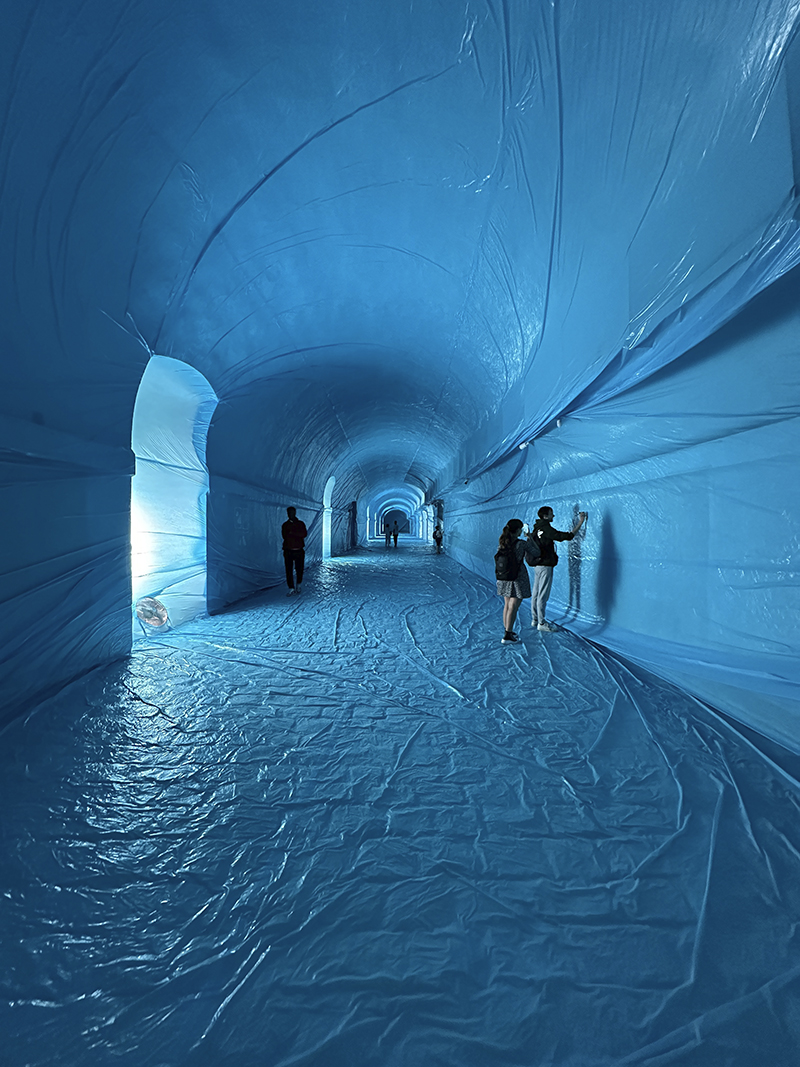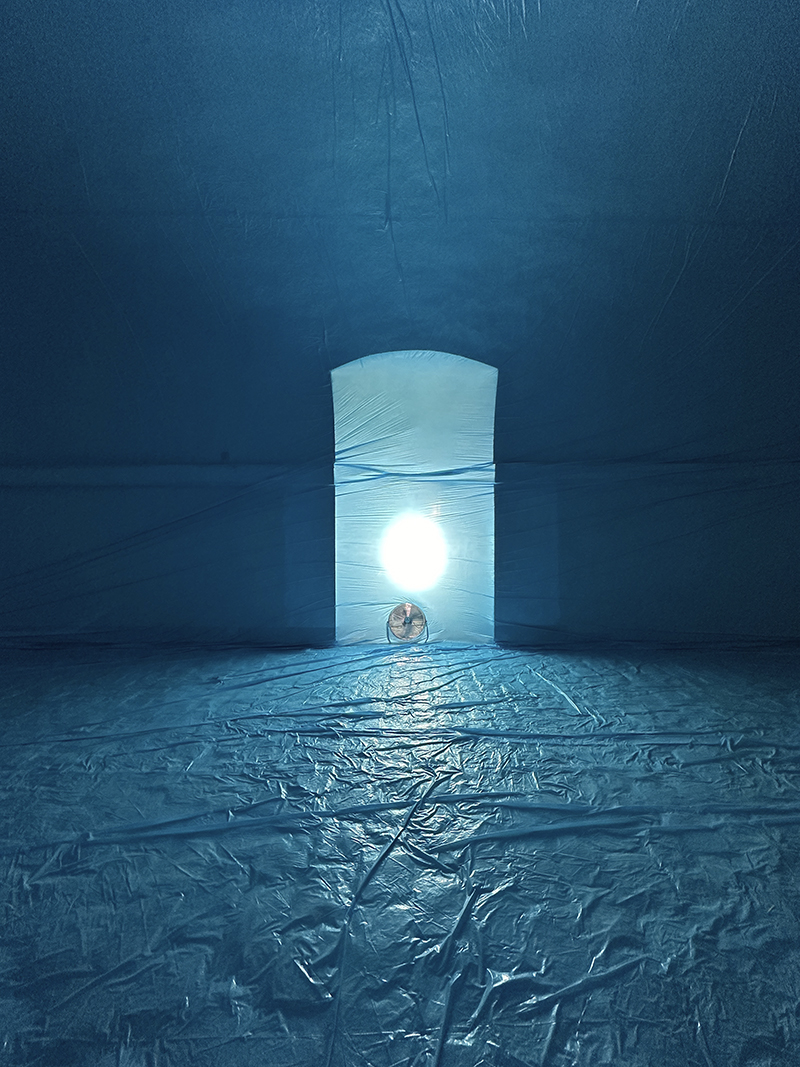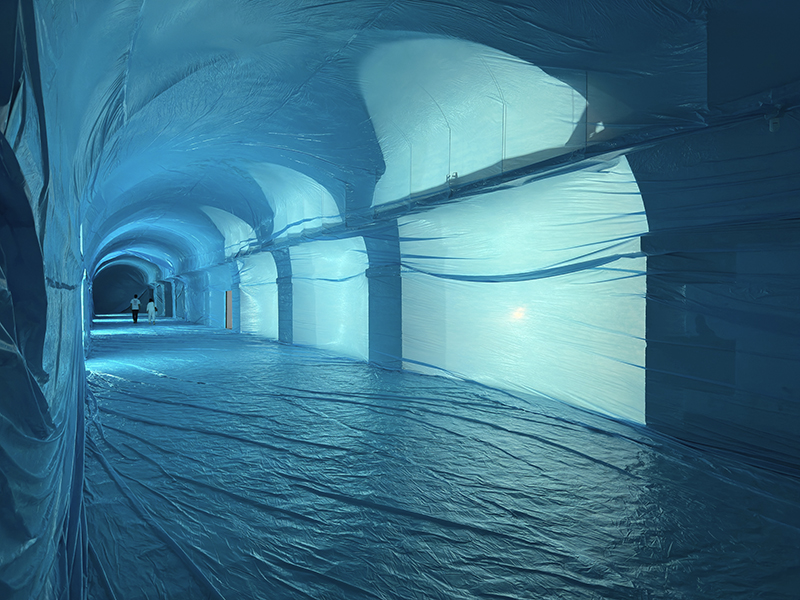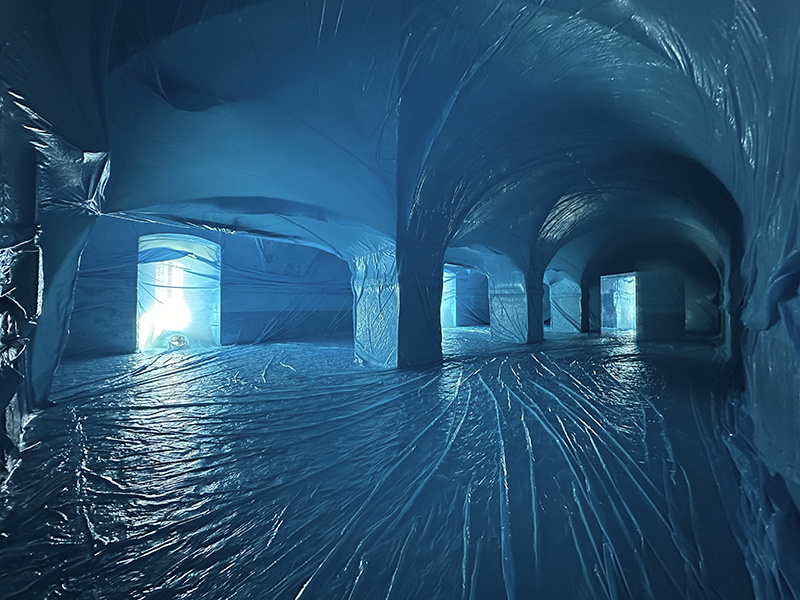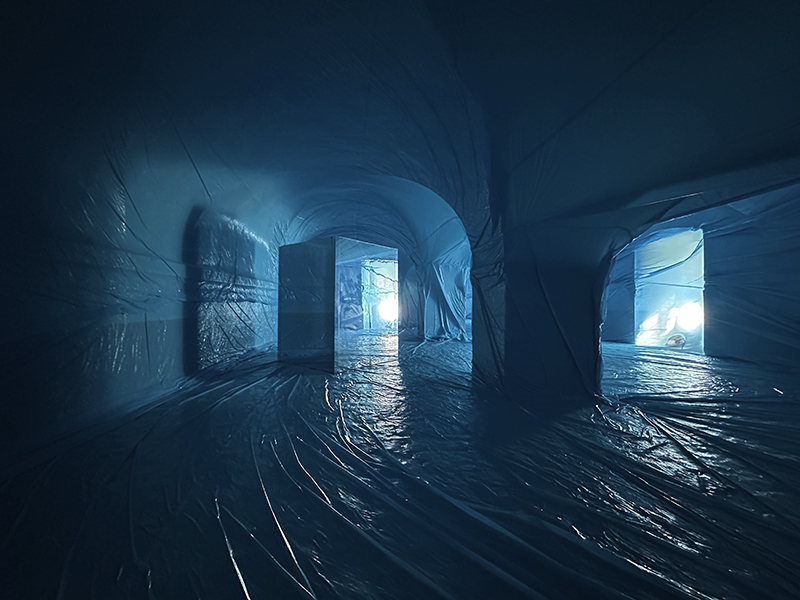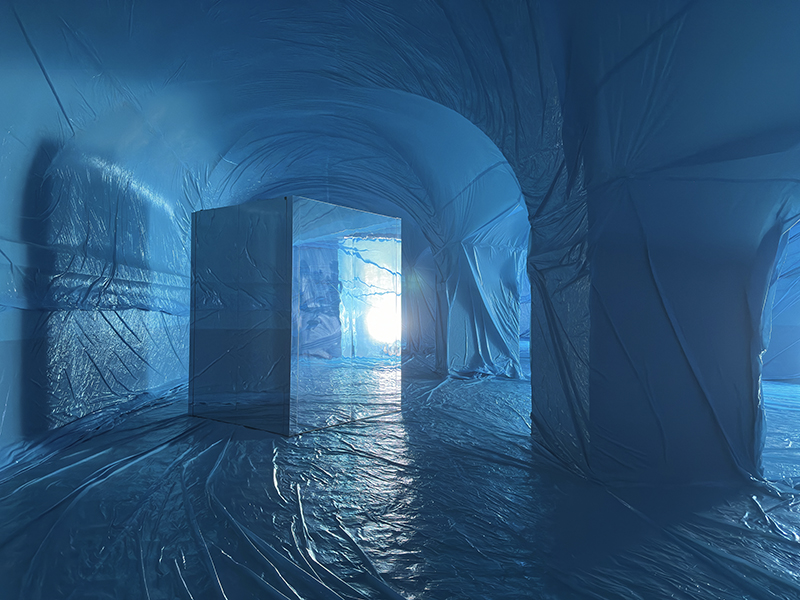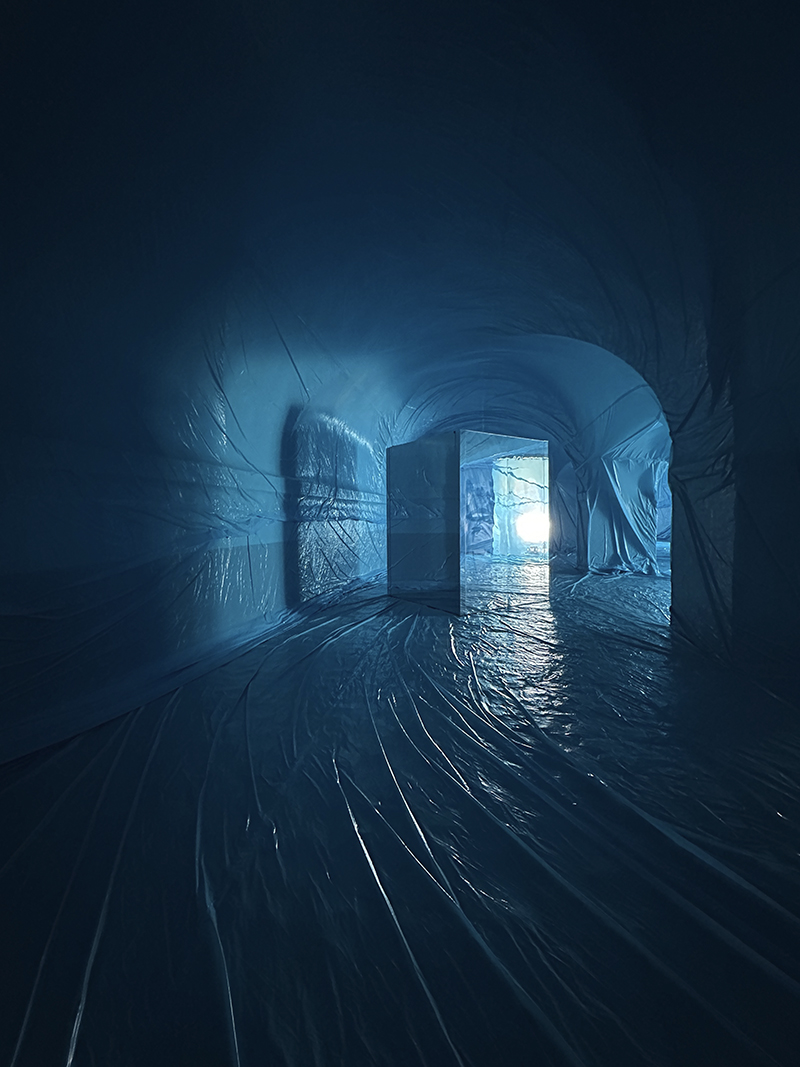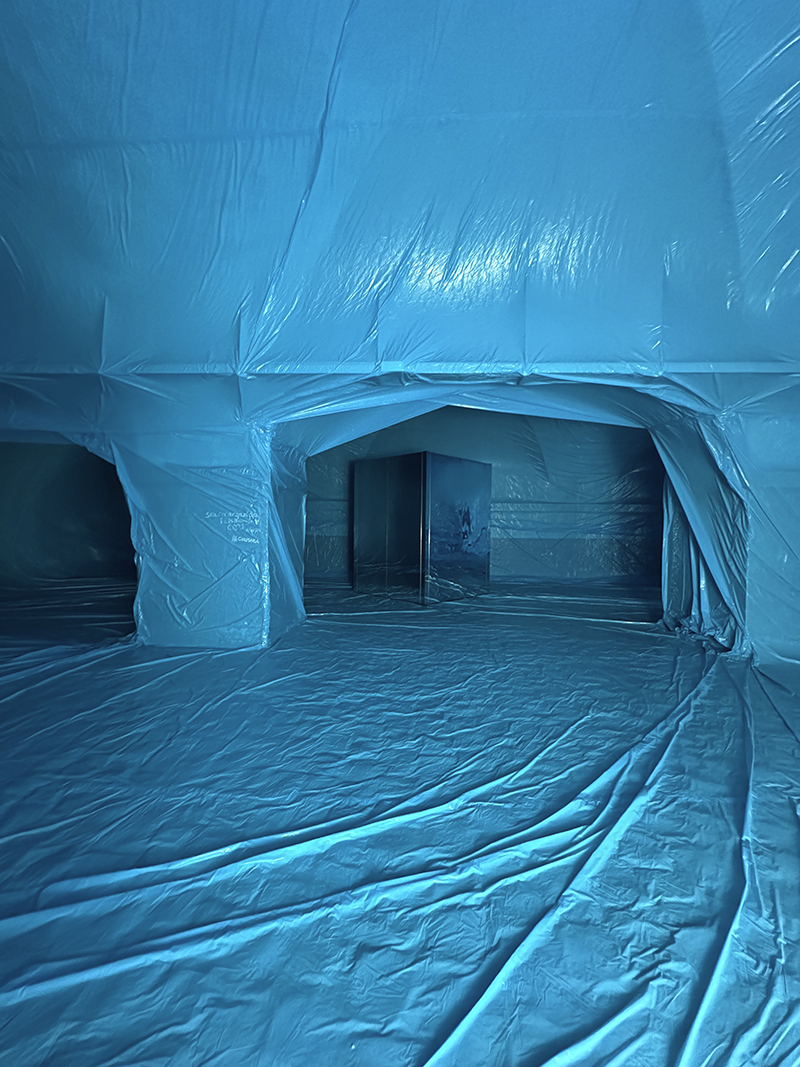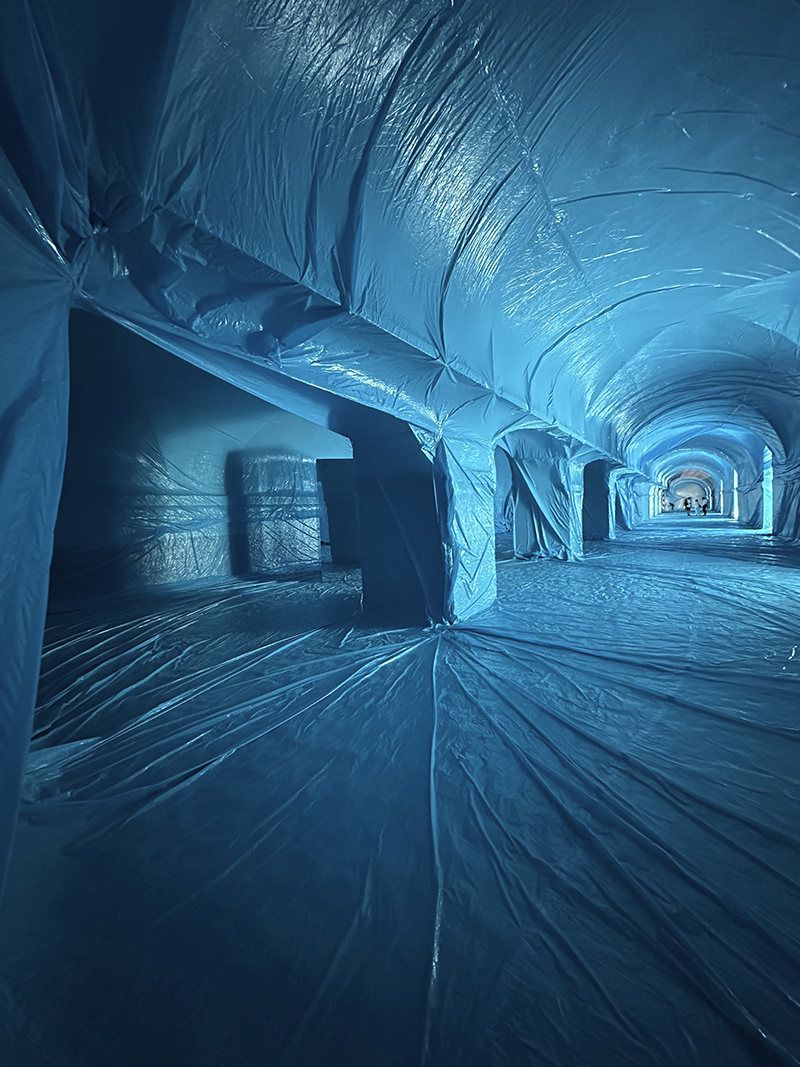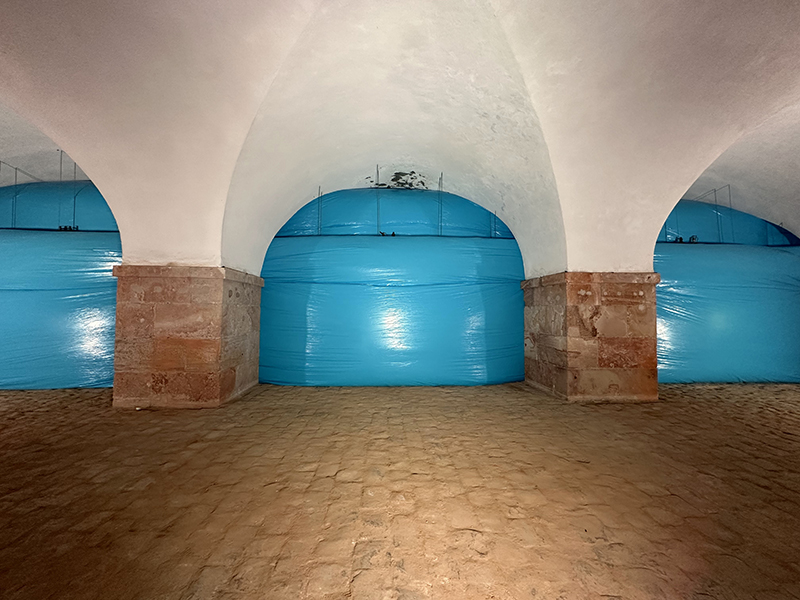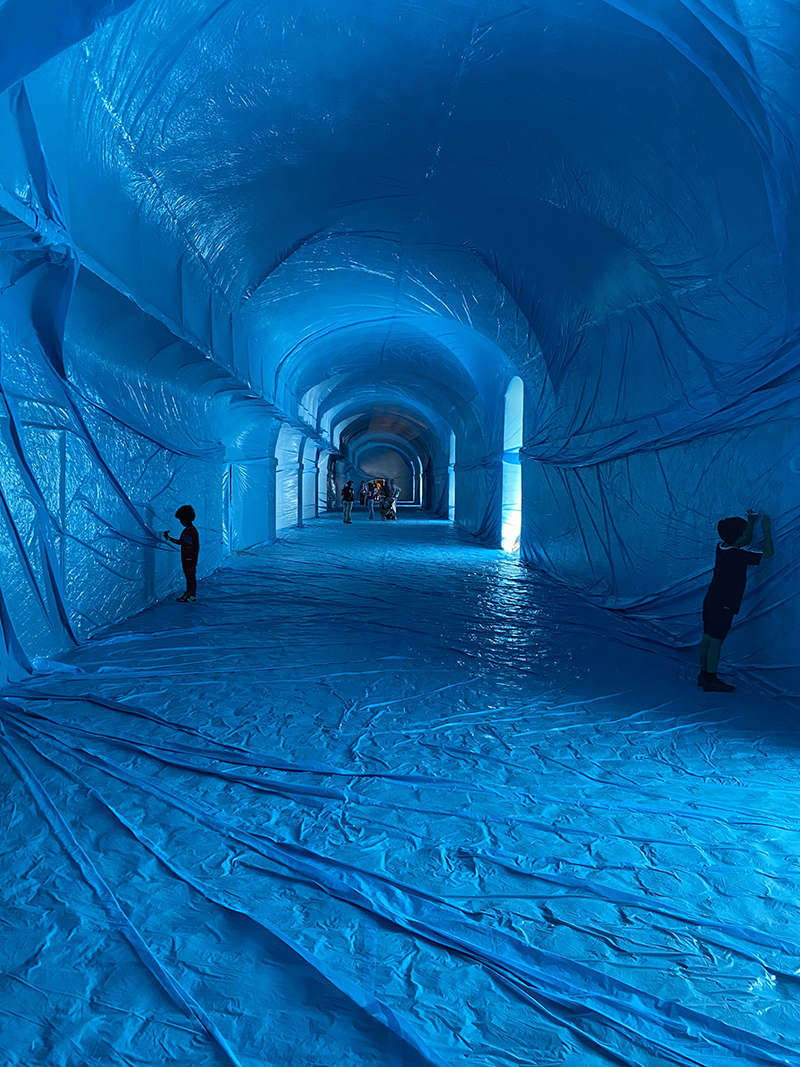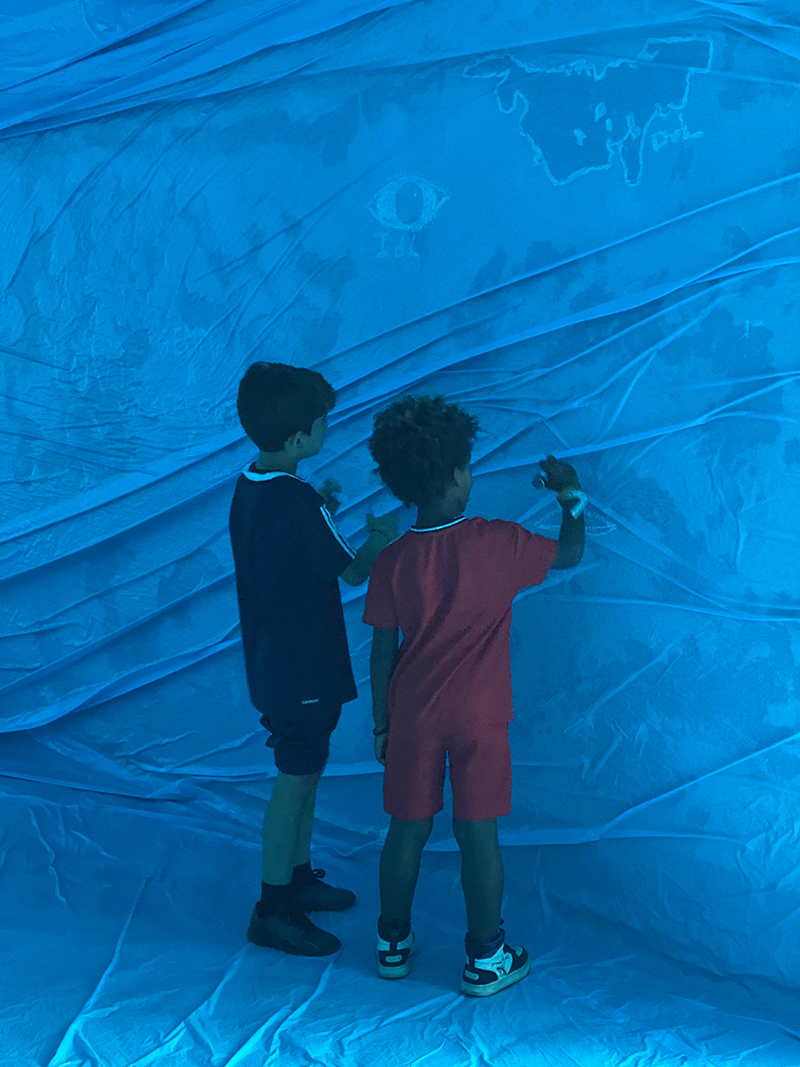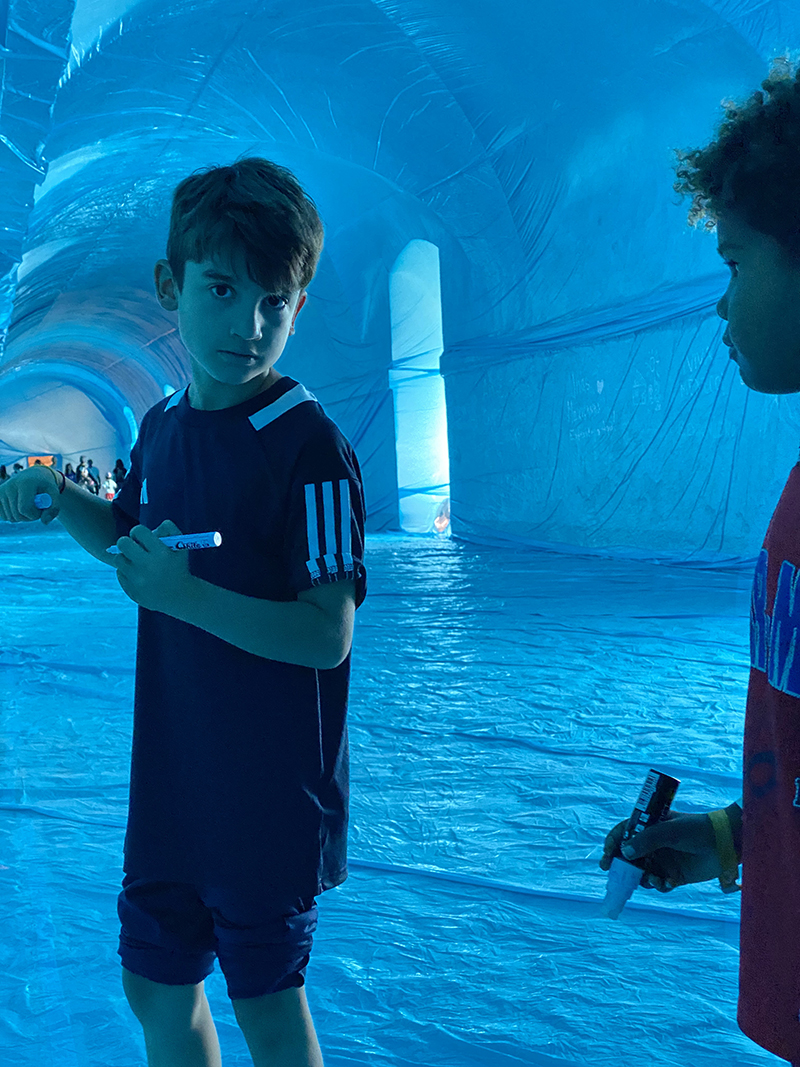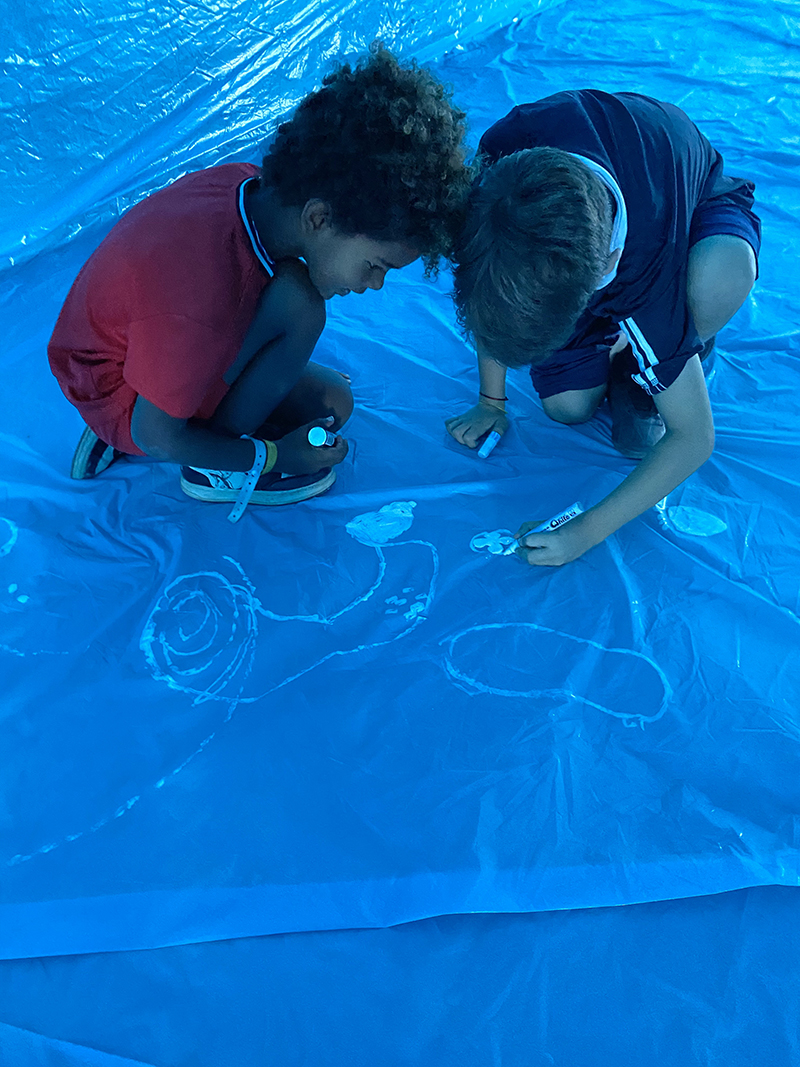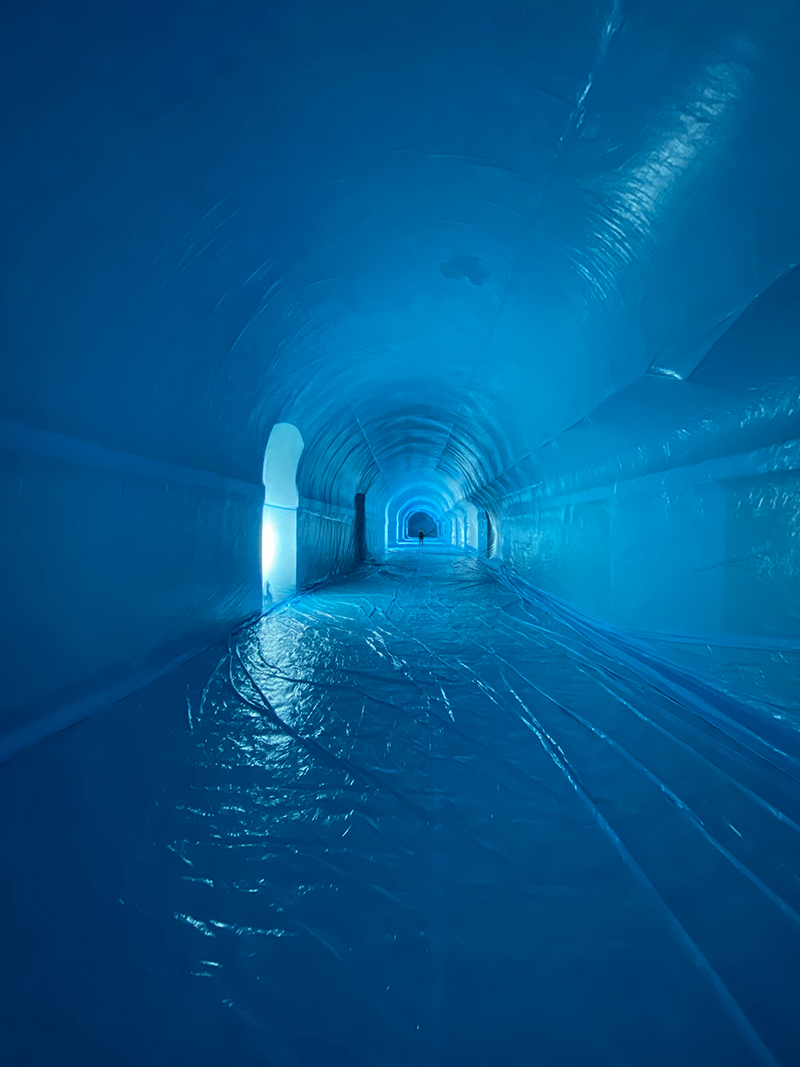Arcs del Quarter
Barcelona, Spain
5 October 2024 – 6 January 2025
100 x 14 x 6 m
Invited by the organizers of the Mira Festival, we presented an installation in the barracks of the Castell de Montjuïc, an 18th-century castle that has accompanied the development of the city of Barcelona from then to the present day. For the occasion, without intending to directly address historical memory, but indeed referencing the military context and the prison function the site once held, we proposed an intervention that enters into dialogue with the space.
In a long corridor with a vaulted ceiling, where daylight streaming through the windows outlines the architecture and darkness dissolves the path toward the unknown and the uncertain, light and shadow intertwine, setting the rhythm of the experience along the 150 meters of hallway, where we propose four distinct moments that make up the work Arcs del Quarter.
In the first moment, the bare space reveals the original architecture, seeking a moment of silence before entering the sky-blue inflatable that can be glimpsed in the distance. The second moment takes place inside the inflatable, whose relation to the 100 meters of corridor—unified in texture and color—guides the audience forward. The third moment unfolds in the space outside the inflatable, on the other side of the columns, where our presence is projected in shadows. And the fourth moment happens in the final room, which embraces the columns and reveals a mirrored cube reflecting our own image.
The entire journey is illuminated by a lighting design that simulates and reinforces the natural light entering through the windows.
Thus, Penique productions proposes an aesthetic experience shaped by the morphology of the architectural space of the Castell de Montjuïc’s barracks. The directionality of this architecture defines a path that conveys the idea of a journey, a passage, a process, inviting the viewer to walk through it. A path that speaks to us of time, and a time that speaks to us of life. It is within these parameters that ideas emerge through image—reflecting inward and projecting outward. It is within these same parameters that the light and color of the inflatable installation occupying this space may speak to us of freedom, while the architecture and the darkness evoke confinement. It is within these very parameters that the public is invited to enter and live the experience, to write and draw on the walls of the inflatable. As identity? As presence? As provocation? As memory? Somewhere between the permanent and the ephemeral.
